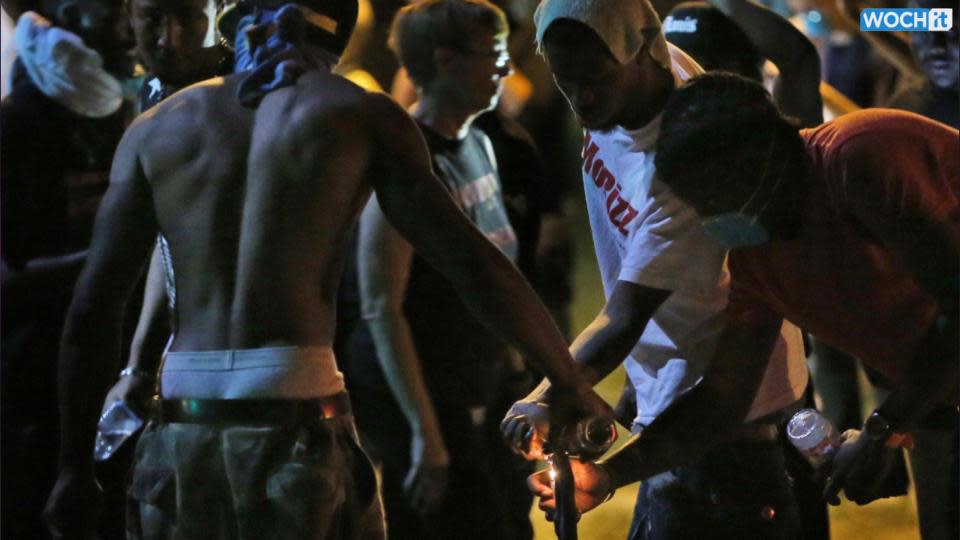Shooting of black teen highlights racial divide in Missouri town

By Nick Carey and James B. Kelleher FERGUSON Mo (Reuters) - The fatal shooting of an unarmed black teenager in Ferguson, Missouri, on Saturday, and subsequent violent protests, highlight a stubborn racial divide in a St Louis suburb that has struggled to build healthy relations between blacks and whites. From the 1970s, Ferguson, pop. 21,000, changed from being overwhelmingly white to predominantly black as whites left the town and its surrounding areas, seeking to avoid racial integration of public schools. African Americans, allegedly excluded from buying homes in many St. Louis neighborhoods in an illegal practice called redlining, found Ferguson a hospitable place to set down roots. "Most of the communities around Ferguson have gone from all Caucasian to all African-American over a 40-year period,” said Terry Jones, a political science professor at the University of Missouri-St. Louis. Ferguson, on St. Louis' northern border, is relatively mixed, with 63 percent of the residents African American and 34 percent white, according to 2010 U.S. Census data. To some Ferguson residents, the shooting death of Michael Brown, 18, symbolizes how African Americans are treated unfairly in a town still run by a Caucasian minority. Mayor James Knowles is white, as are all but one of six city council members. The police chief is white, and only three members of the 53-person police force are African Americans. A 2013 state attorney general's report found more than 85 percent of motorists pulled over in the city are African American, and the arrest rate among blacks is twice the rate among white residents. TROUBLED HISTORY For the broader St. Louis area, the Ferguson disturbances represent another troubled chapter for a metropolitan area with a painful track record on race. Before the Civil War, a federal judge in downtown St. Louis sent former slave Dred Scott back into slavery, a decision later upheld by the U.S. Supreme Court. In 1917, racial riots across the Mississippi River in East St. Louis were among the most deadly in U.S. history. And in the 1970s, St. Louis experienced tense court battles over school desegregation. Today, St. Louis remains one of the most racially segregated cities in the United States, according to a study of Census Data by researchers at Brown University and Florida State University. Jones, of the University of Missouri-St. Louis, says Ferguson until now had the reputation of a suburb that made integration work. A revitalization of Ferguson's downtown, directed by a newly hired city planning director, has brought new restaurants and shops into the once-drowsy neighborhood. The city has worked with local employers, including Emerson Electric and the University of Missouri, to encourage employees of all races to live and work in Ferguson. “It's a bit of an irony that the one municipality that made that effort has suffered the biggest conflict,” Jones said. POLICING IN THE SPOTLIGHT John Gaskin III, a member of the St. Louis County NAACP board of directors, said the group was outraged by Brown's killing, but said the issues were hardly unique to Ferguson or St. Louis. He cited the case of Eric Garner, a 43-year-old unarmed black man who died after New York police put him in a banned chokehold. “Police brutality takes place in every state, all over the country, every day," Gaskin said. "A big part of the problem is that our police departments don't look like our communities." Protestors who stormed the streets of Ferguson in the aftermath of the Brown shooting said race was at the root of Ferguson's troubles. Mary Hall, 57, said police stop her car frequently as she drives through Ferguson. "You can't drive anywhere without being stopped," Hall said. At a protest outside a burned-out gas station in Ferguson, 92-year-old L.T. Taylor put the events into perspective. "I been here a long time and I had hoped we could move past this in America," he said. "But some things don't change." Some protestors put their emotions into writing. "Beware, Killer Cop on the Loose. Watch Out, Children," read a hand-painted placard leaning against a stately tree. Others wrote messages trying to urge calm. Jerome Williams, 32, carried a sign reading, "Guns down for Mike Brown." Police said Brown was shot in a struggle with a gun in the Ferguson Police Department squad car, but they have not said why Brown was in the car. At least one shot was fired during the struggle, and the officer fired more shots before leaving the car, police said. As of Tuesday evening, more than 50 people had been arrested in two nights of disturbances following Brown's death. The FBI has opened a civil rights investigation into the racially charged case, and St. Louis County also is investigating the shooting. (Additional reporting by Mary Wisniewski in Chicago and Carey Gillam in Ferguson, Mo.; Writing by James B. Kelleher in Chicago; Editing by Ken Wills, David Greising and Jeremy Laurence)


